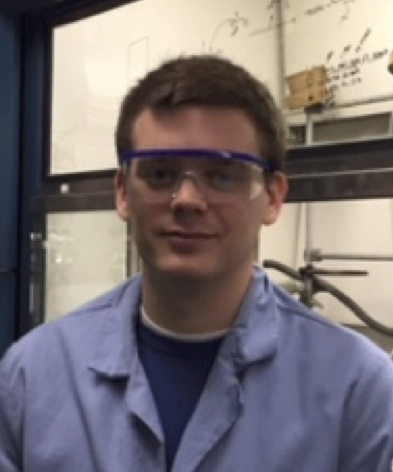Org. Synth. 2017, 94, 123-135
DOI: 10.15227/orgsyn.094.0123
Rhodium(I)-catalyzed Allenic Pauson-Khand Reaction
Submitted by Joseph E. Burchick. Jr., Sarah M. Wells, and Kay M. Brummond
1*
Checked by Arthur Han and Sarah E. Reisman
1. Procedure
A. N-(But-2-yn-1-yl)-4-methylbenzenesulfonamide (1). A 250-mL, two-necked, round-bottomed flask (Note 1) is fitted with a 4 cm, Teflon-coated, elliptical stir bar, a septum, and a nitrogen inlet adapter. The septum is removed and the flask is charged sequentially with potassium carbonate (6.6 g, 48 mmol, 1.6 equiv), N,N-dimethylformamide (33 mL) and N-(tert-butoxycarbonyl)-p-toluenesulfonamide (8.14 g, 30 mmol, 1 equiv) (Note 2). The septum is replaced, and the flask is flushed with nitrogen. The suspension is stirred at room temperature for 1 h and 1-bromo-2-butyne (2.6 mL, 30 mmol, 1 equiv) is added dropwise over 5 min via a 3-mL syringe. The reaction mixture is stirred at room temperature for an additional 2 h (Note 3) at which point it is transferred to a 500-mL separatory funnel using diethyl ether (100 mL) to rinse the flask. The organics are washed with deionized water (2 x 100 mL). The combined aqueous washes are extracted with diethyl ether (2 x 100 mL). The combined organic layers are concentrated via rotary evaporation (40 °C, 10 mmHg) to afford a white solid, which is dissolved in CH2Cl2 (15 mL) and transferred to a 250-mL, single-necked, round-bottomed flask fitted with a 2.5 cm Teflon-coated elliptical stir bar (Note 1). Trifluoroacetic acid (6.4 mL, 84 mmol, 2.8 equiv) is added via a 10 mL syringe and a nitrogen inlet adapter is placed on the flask. The reaction is stirred under a nitrogen atmosphere at room temperature for 20 h (Note 4) at which point the stir bar is removed and the reaction is concentrated via rotary evaporation (40 °C, 10 mmHg). The crude orange oil is purified via SiO2 column chromatography (Note 5) to afford 1 as a white solid (4.87 g, 73%) (Note 6).
B. N-(But-2-yn-1-yl)-N-(3-(((tert-butyldiphenylsilyl)oxy)methyl)penta-3,4-dien-1-yl)-4-methylbenzenesulfonamide (3). A two-necked, 250-mL, round-bottomed flask is fitted with a 2.5 cm, Teflon-coated, elliptical stir bar, a reflux condenser, and a septum (Note 1). The septum is removed and sodium hydride (NaH) (722 mg, 18.0 mmol, 1.1 equiv, 60% suspension in mineral oil) is added (Note 7). The septum is replaced and N,N-dimethylformamide (50 mL) is added via syringe all at once (Note 2). The flask is placed into an ice water bath (0 °C) for 10 min, then N-(but-2-yn-1-yl)-4-methylbenzenesulfonamide (1) (4.40 g, 19.7 mmol, 1.2 equiv) is added all at once by temporarily removing the septum. The flask is removed from the ice bath, allowed to warm to room temperature over 5 min, and lowered into an oil bath preheated to 100 °C. In a separate flask, 3-(((tert-butyldiphenylsilyl)oxy)methyl)penta-3,4-dien-1-yl methanesulfonate (2), (7.07 g, 16.3 mmol, 1.0 equiv) prepared using Org. Synth., 2017, 94, 109-122, is dissolved in N,N-dimethylformamide (5 mL), and this solution is added to the reaction flask in one portion using a syringe. The reaction is stirred at this temperature for 50 min (Note 8). The flask is removed from the oil bath and allowed to cool to room temperature. The mixture is transferred to a 500-mL separatory funnel using diethyl ether (20 mL) to rinse the flask. The mixture is washed with saturated NH4Cl (1 x 100 mL), saturated NaHCO3 (1 x 100 mL), and brine (1 x 100 mL). The organic layer is dried over MgSO4 and concentrated via rotary evaporation (40 °C, 10 mmHg). The resulting residue is purified via silica gel column chromatography (Note 9) to afford 3 as a pale yellow oil (8.11 g, 89%)(Note 10).
C.
5-(((tert-Butyldiphenylsilyl)oxy)methyl)-8-methyl-2-tosyl-2,3,4,6-tetrahydrocyclopenta[c]azepin-7(1H)-one (
4).
A 1-L, two-necked round-bottomed flask is fitted with a Teflon-coated, 4 cm, elliptical stir bar, a reflux condenser with a nitrogen inlet needle, and a septum (
Note 1). The flask is charged with
rhodium biscarbonyl chloride dimer (
[Rh(CO)2Cl]2) (41.8 mg, 0.1 mmol, 1 mol %) and toluene (350 mL) (
Note 11). The flask is evacuated via a needle pierced through the condenser septum that is connected to the vacuum line. After a few seconds the needle is removed and the septum is pierced with a CO-filled balloon and the flask is filled with
carbon monoxide (
Note 12). This evacuation/CO fill step is repeated three times and the flask is lowered into an oil bath preheated to 110 °C. In a 20-mL, scintillation vial, allene-yne
3 (6.00 g, 10.8 mmol, 1 equiv) is dissolved in toluene (10 mL). The allene-yne solution is added dropwise to the reaction flask over 2 h via syringe pump addition using a 20-mL plastic syringe (Figure 1). An additional portion of toluene (10 mL) is used to rinse the syringe and render the transfer quantitative. After the addition is complete, the reaction is stirred for an additional 15 min (
Note 12). The flask is removed from the oil bath and the solution is allowed to cool to room temperature. The condenser is removed and polymer-bound triphenylphosphine (3.66 g, ~3 mmol/g, 11.0 mmol) is added all at once. A septum is placed on the flask and the suspension is stirred at room temperature as a closed system for 16 h. The mixture is filtered through a 250-mL, medium-porosity glass fritted filter into a 1-L, recovery flask and concentrated via rotary evaporation (40 °C, 10 mmHg). The resulting residue is purified via silica gel flash column chromatography (
Note 13) to afford
4 as a white foam (5.53 g, 88%)(
Note 14).
Figure 1. Apparatus Set-up for Step C
2. Notes
1. All glassware was flame-dried under vacuum (3 mmHg) and filled with nitrogen
while hot. Unless stated otherwise, reactions were performed under a nitrogen atmosphere.
2.
N,N-Dimethylformamide (99.8%) was purchased from Sigma Aldrich and used as received.
K2CO3 (99.9%) was purchased from J.T. Baker and used as received.
N-(tert-Butoxycarbonyl)-p-toluenesulfonamide (98%) was purchased from TCI and used as received.
1-bromo-2-butyne (98%) was purchased from GFS and used as received. Trifluoroacetic acid (99%) was purchased from Alfa Aesar and used as received.
3. The reaction was monitored by TLC analysis using glass-backed, 60 Å silica gel plates purchased from SiliCycle with 20% ethyl acetate in hexanes as the mobile phase. UV (shortwave) was used as the visualization method.
N-(tert-Butoxycarbonyl)-(but-2-yn-1-yl)-4-methylbenzenesulfonamide: R
f = 0.34.
4. The reaction was monitored by TLC analysis using glass-backed, 60 Å silica gel plates purchased from SiliCycle with 20% ethyl acetate in hexanes as the mobile phase. UV (shortwave) was used as the visualization method.
N-(but-2-yn-1-yl)-4-methylbenzenesulfonamide (
1): R
f = 0.16.
5. The submitters used silica gel that was purchased from Fisher Scientific (grade 60, 40-63 μm particle size). The crude reaction mixture was loaded onto a 7 cm column (120 g silica gel), and 20 mL fractions were collected in 16 x 150 mm test tubes. 20% Ethyl acetate in hexanes was used as the eluent, which was increased to 50% ethyl acetate in hexanes once product began to elute.
6. A reaction performed on half scale provided a 71% yield of the same product.
N-(But-2-yn-1-yl)-4-methylbenzenesulfonamide (
1) has the following spectroscopic and physical properties:
1H NMR
pdf(400 MHz, CDCl
3) d: 1.56 (t,
J = 2.5 Hz, 3H), 2.42 (s, 3H), 3.71-3.77 (m, 2H), 4.87 (t,
J = 6.2 Hz, 1H), 7.29 (d,
J = 7.9 Hz, 2H), 7.76 (d,
J = 8.3 Hz, 2H).
13C NMR
pdf(101 MHz, CDCl
3) d: 3.2, 21.4, 33.3, 73.1, 80.9, 127.4, 129.4, 136.6, 143.4. FTIR (thin film, cm
-1): 3272, 2921, 1598, 1441, 1327. HRMS: calcd for C
11H
12O
nNS (M+H
+): 224.0770; found: 224.0761. mp (uncorrected): 68 - 70 °C. The purity of the product was determined to be 99% by quantitative
1H NMR
pdf using dimethyl fumarate as an internal standard.
7.
NaH (60% dispersion in mineral oil) was purchased from Acros and was used as received.
8. The reaction was monitored by TLC analysis using glass-backed, 60 Å silica gel plates purchased from SiliCycle with 20% ethyl acetate in hexanes as the mobile phase. UV (shortwave) was used as the visualization method.
N-(But-2-yn-1-yl)-N-(3-(((tert-butyldiphenyl-silyl)oxy)methyl)penta-3,4-dien-1-yl)-4-methylbenzenesulfonamide (
3): R
f = 0.49.
9. The submitters used silica gel that was purchased from Fisher Scientific (grade 60, 40-63 μm particle size). The crude reaction mixture was loaded onto a 7 cm column (125 g silica gel) and 20 mL fractions were collected in 16 x 100mm test tubes. 10% EtOAc in hexanes was used as the eluent.
10. The checkers report an 89% yield when the reaction is run on a 10.4 mmol scale.
N-(But-2-yn-1-yl)-N-(3-(((tert-butyldiphenyl-silyl)oxy)methyl)-penta-3,4-dien-1-yl)-4-methylbenzenesulfonamide (
3) has the following spectroscopic properties:
1H NMR
pdf(400 MHz, CDCl
3) δ: 1.05 (s, 9H), 1.54 (t,
J = 2.4, 3H), 2.26 - 2.37 (m, 2H), 2.41 (s, 3H), 3.25 - 3.34 (m, 2H), 4.06 (q,
J = 2.4 Hz, 2H), 4.18 (t,
J = 2.5 Hz, 2H), 4.71 (p,
J = 2.8 Hz, 2H), 7.27 (d,
J = 7.9 Hz, 2H), 7.34 - 7.47 (m, 6H), 7.67 (dd,
J = 7.9, 1.6 Hz, 4H), 7.72 (d,
J = 8.3 Hz, 2H).
13C NMR
pdf(101 MHz, CDCl
3) δ: 3.3, 19.3, 21.5, 26.8, 27.0, 36.9, 44.7, 64.5, 71.9, 76.9, 81.4, 99.9, 127.6, 127.8, 129.2, 129.6, 133.4, 135.6, 136.2, 143.0, 205.7. FTIR (thin film, cm
-1): 3072, 2931, 2857, 1960, 1599, 1348, 1160. HRMS: calcd for C
33H
40O
3NSSi (M+H
+): 558.2493; found: 558.2492. The purity of the product was determined to be 98% by quantitative
1H NMR
pdf using dimethyl fumarate as an internal standard.
11. The toluene was purchased from Fisher Scientific and was freshly distilled from CaH
2. The
[Rh(CO)2Cl]2 was purchased from Strem and used as received; the checkers recommend storing the catalyst under an inert atmosphere to maintain the integrity of the reagent. The polymer-bound triphenylphosphine (~3 mmol/g) was purchased from Sigma Aldrich and used as received.
Carbon monoxide gas (99.99%) was purchased from Matheson Gas.
12. The reaction was monitored by removing a small aliquot by syringe for TLC analysis that used glass-backed, 60 Å silica gel plates purchased from SiliCycle with 20% ethyl acetate in hexanes as the mobile phase. UV (shortwave) was used as the visualization method.
5-(((tert-Butyldiphenylsilyl)oxy)methyl)-8-methyl-2-tosyl-2,3,4,6-tetrahydro-cyclopenta[c]azepin-7(1H)-one (
4): R
f = 0.10.
13. The submitters used silica gel that was purchased from Fisher Scientific (grade 60, 40-63 μm particle size). The crude residue was loaded onto a 7-cm column (130 g silica gel) and 20 mL fractions were collected in 16 x 150 mm test tubes. 30% EtOAc in hexanes was used as the eluent.
14. A reaction performed at half scale provided a 90% yield of the identical product.
1H NMR
pdf(400 MHz, CDCl
3) δ: 1.04 (s, 9H), 1.80 (s, 3H), 2.32 (s, 2H), 2.37 (s, 3H), 2.75 (t,
J = 6.0 Hz, 2H), 3.64 (dd,
J = 6.6, 5.4 Hz, 2H), 4.05 (s, 2H), 4.44 (s, 2H), 7.19 (d,
J = 7.7 Hz, 2H), 7.33 - 7.48 (m, 6H), 7.55 - 7.63 (m, 6H).
13C NMR
pdf(101 MHz, CDCl
3) δ: 8.3, 19.2, 21.4, 26.7, 29.2, 38.1, 45.2, 48.0, 65.3, 127.0, 127.8, 129.4, 129.9, 131.8, 132.8, 134.1, 135.4, 136.1, 139.9, 143.4, 161.1, 203.2. FTIR (thin film, cm
-1): 2931, 2857, 1698, 1347, 1159, 1105. HRMS: calc'd for C
34H
40O
4NSSi (M+H
+): 586.2442; found: 586.2440. mp (uncorrected): 125-127 °C. The purity of the product was determined to be 98% by quantitative
1H NMR
pdf using dimethyl fumarate as an internal standard.
Working with Hazardous Chemicals
The procedures in
Organic Syntheses are intended for use only by persons with proper training in experimental organic chemistry. All hazardous materials should be handled using the standard procedures for work with chemicals described in references such as "Prudent Practices in the Laboratory" (The National Academies Press, Washington, D.C., 2011; the full text can be accessed free of charge at
http://www.nap.edu/catalog.php?record_id=12654). All chemical waste should be disposed of in accordance with local regulations. For general guidelines for the management of chemical waste, see Chapter 8 of Prudent Practices.
In some articles in Organic Syntheses, chemical-specific hazards are highlighted in red "Caution Notes" within a procedure. It is important to recognize that the absence of a caution note does not imply that no significant hazards are associated with the chemicals involved in that procedure. Prior to performing a reaction, a thorough risk assessment should be carried out that includes a review of the potential hazards associated with each chemical and experimental operation on the scale that is planned for the procedure. Guidelines for carrying out a risk assessment and for analyzing the hazards associated with chemicals can be found in Chapter 4 of Prudent Practices.
The procedures described in Organic Syntheses are provided as published and are conducted at one's own risk. Organic Syntheses, Inc., its Editors, and its Board of Directors do not warrant or guarantee the safety of individuals using these procedures and hereby disclaim any liability for any injuries or damages claimed to have resulted from or related in any way to the procedures herein.
3. Discussion
First reported in 1971, the Pauson-Khand reaction (PKR) is a three-component metal-mediated process which affords a cyclopentenone from an alkene, an alkyne, and
carbon monoxide.
2 Originally mediated by dicobaltoctacarbonyl (Co
2(CO)
8), synthetically useful transformations required a stoichiometric quantity of metal carbonyl and strained alkenes. Several developments have been made over the last four decades, including catalytic metal loadings and a broader substrate scope, making the PKR one of the most valuable protocols for accessing cyclopentenones.
3 Amongst these advancements are cyclocarbonylation reactions of allene-ynes, an allenic Pauson-Khand reaction (APKR), a transformation that has significantly expanded the scope of the PKR. The Brummond group was the first to show that the reacting double bond of the allene in the APKR could be controlled by the choice of metal carbonyl mediator or catalyst.
4 For example, when using rhodium(I)-catalyzed conditions, a selective reaction with the distal double bond of
5 affords the alkylidene cyclopentenone
7a. Calculations support an energetically favorable distorted square-planar transition state geometry affording metallacycle
6a as the reason for this selectivity.
Scheme 1. Metal directed allenic Pauson-Khand reaction
Alternatively, a molybdenum(0)-mediated cyclocarbonylation reaction of allene-yne
5 results in the α-methylene cyclopentenone
7b; computationally this product is predicted based upon a low energy trigonal bipyramidal transition state geometry that affords metallacycle
6b (Scheme 1).
5 This Rh(I)-catalyzed APKR was extended to the preparation of bicyclo[5.3.0]decadienone ring systems, representing the first synthetically useful PKR to generate seven-membered rings. Thus, the APKR has been employed by a number of groups to provide molecularly complex, polycyclic frameworks with seven-membered rings. For example Brummond and coworkers have used this method to access the structurally complex frameworks of the guaianolide family of natural products, a transformation that showcases the efficiency and functional group compatibility of the Rh(I)-catalyzed APKR (Scheme 2).
6 Baran and coworkers have utilized the APKR in the step-economical and landmark syntheses of both (+)-ingenol and (+)-phorbol (Scheme 3a).
7 Mukai and coworkers employed the APKR in the total synthesis of (+)-achalensolide as well as (+)-indicanone (Scheme 3b and c).
8
Scheme 2. APKR used to access biologically active guaianolide frameworks
Herein is reported the preparation of tethered allene-yne
3 from
N-(but-2-yn-1-yl)-4-methylbenzenesulfonamide 1 and allenyl mesylate
2, followed by an APKR. Both of these transformations are characterized by high yields, short reaction times, and scalability. The APKR proceeds with low catalyst loading (1 mol%) and complete selectivity towards the distal double bond of the allene. Based on previously reported studies, it was found that by utilizing low reaction concentrations and dropwise addition of allene-yne
3, the yield of Pauson-Khand product
4 was optimized.
9 Compound
4 is unique in that not only does the 7-membered ring contain a heteroatom, but the product is highly functionalized, lending to the possibility of further synthetic modification. Experimental studies are currently underway to determine the feasibility of various synthetic modifications to
4. The primary goal of these synthetic studies is to apply them to future PKR systems to rapidly and efficiently generate natural products and analogs thereof.
Scheme 3. a) Baran's total synthesis of (+)-ingenol and (+)-phorbol using the common APK product 11. b) Mukai's total synthesis of (+)-achalensolide. c) Mukai's total synthesis of (+)-indicanone
Appendix
Chemical Abstracts Nomenclature (Registry Number)
N-(tert-Butoxycarbonyl)-p-toluenesulfonamide: Carbamic acid, N-[(4-methylphenyl)sulfonyl]-, 1,1-dimethylethyl ester; (18303-04-3)
Potassium carbonate: Carbonic acid, potassium salt (1:2); (584-08-7)
1-Bromo-2-butyne: 2-Butyne, 1-bromo-; (3355-28-0)
Sodium hydride: Sodium hydride (NaH); (7646-69-7)
Rhodium biscarbonyl chloride dimer: Rhodium, tetracarbonyldi-μ-chlorodi-Coordination Compound; (14523-22-9)
CO: Carbon monoxide; (630-08-0)

|
Kay M. Brummond received her education and training as a synthetic chemist from the University of Nebraska-Lincoln, Pennsylvania State University, and the University of Rochester. She was a member of the faculty at West Virginia University and is currently Professor and Chair of the Chemistry Department at the University of Pittsburgh. Her research program focuses on developing new synthetic methods to expedite the preparation and expansion of Nature's toolbox of biologically relevant compounds. |

|
Joseph E. Burchick Jr. was born near Pittsburgh, Pennsylvania. He graduated from Allegheny College with a B.S. in chemistry in 2013 and began his graduate studies at the University of Pittsburgh in 2014. Joe is currently pursuing his Ph.D. in chemistry, applying the allenic Pauson-Khand reaction to the synthesis of biologically active products under the advisement of Kay M. Brummond. |

|
Sarah M. Wells grew up in Colorado Springs, CO. In 2010, she began her research experience as an REU student at the University of Connecticut under Professor Christian Bruckner. In 2011, she earned her B.S. in Chemistry from Grove City College in Grove City, PA. Sarah then joined the Brummond group at the University of Pittsburgh, Pittsburgh, PA where she studied an allenic Pauson-Khand approach towards guaianolide natural product analogs. |

|
Arthur Han received his B.A. in chemistry from Columbia University in 2013, where he did undergraduate research under the supervision of Professors Jack Norton and Samuel Danishefsky. He is currently pursuing his Ph.D. at the California Institute of Technology in the laboratory of Professor Sarah Reisman, where his graduate work is focused on the total synthesis of polyhydroxylated diterpene natural products. |
Copyright © 1921-, Organic Syntheses, Inc. All Rights Reserved